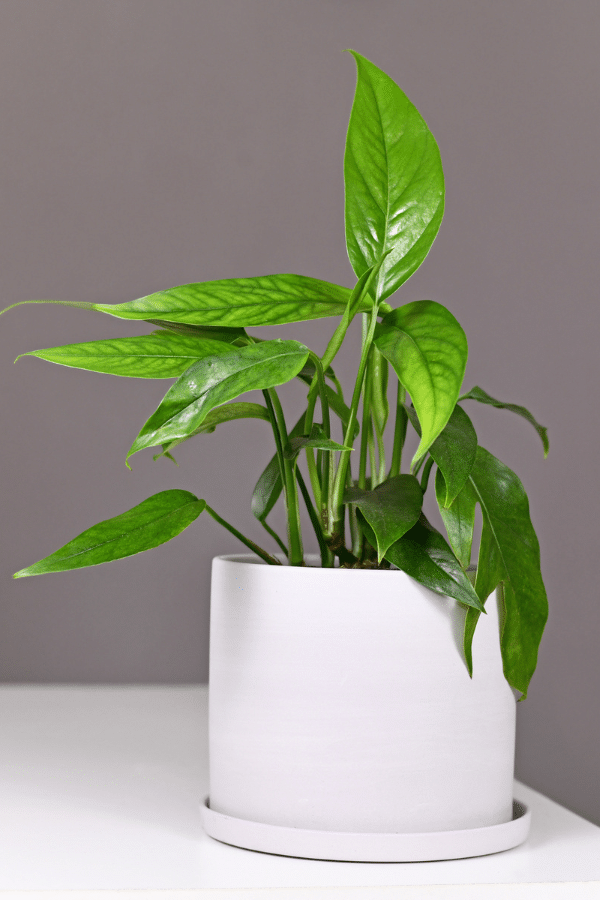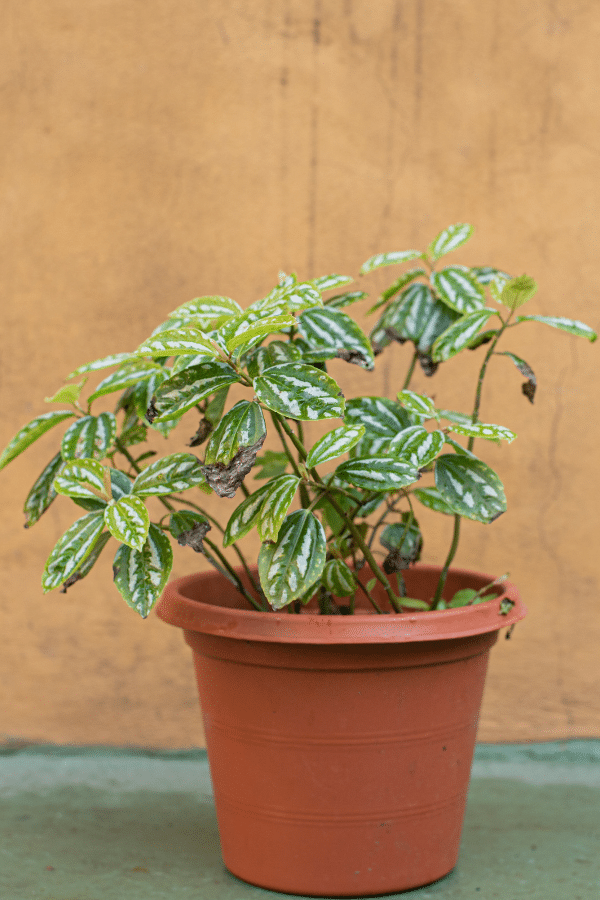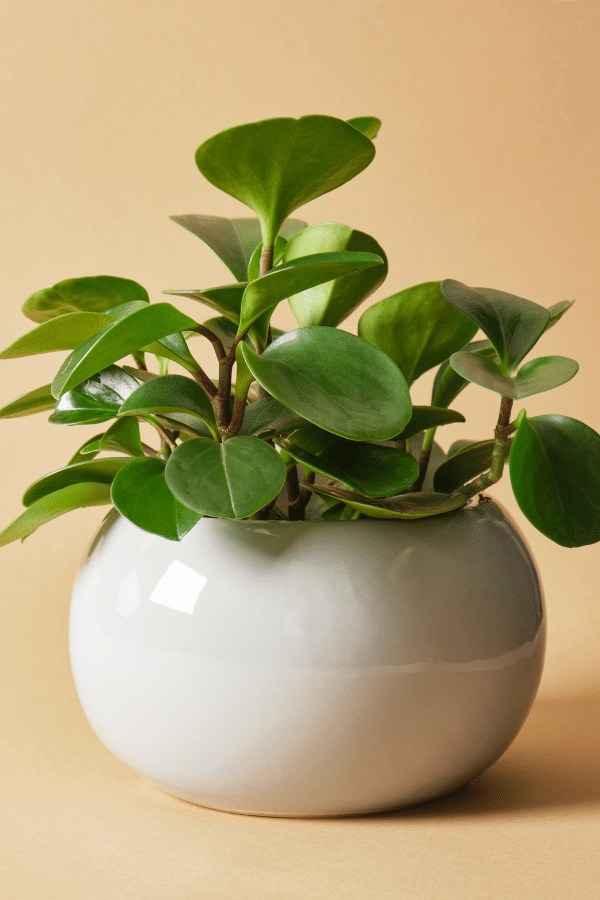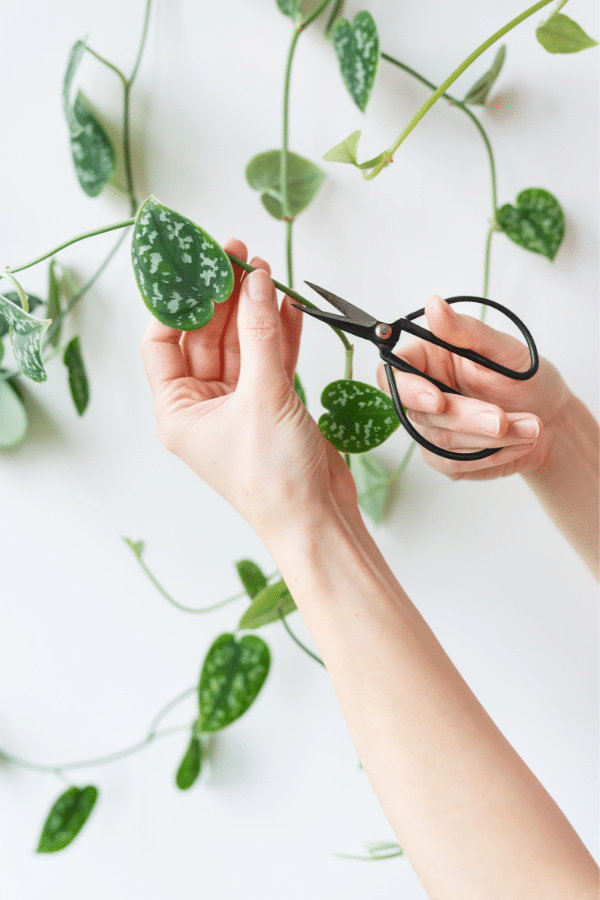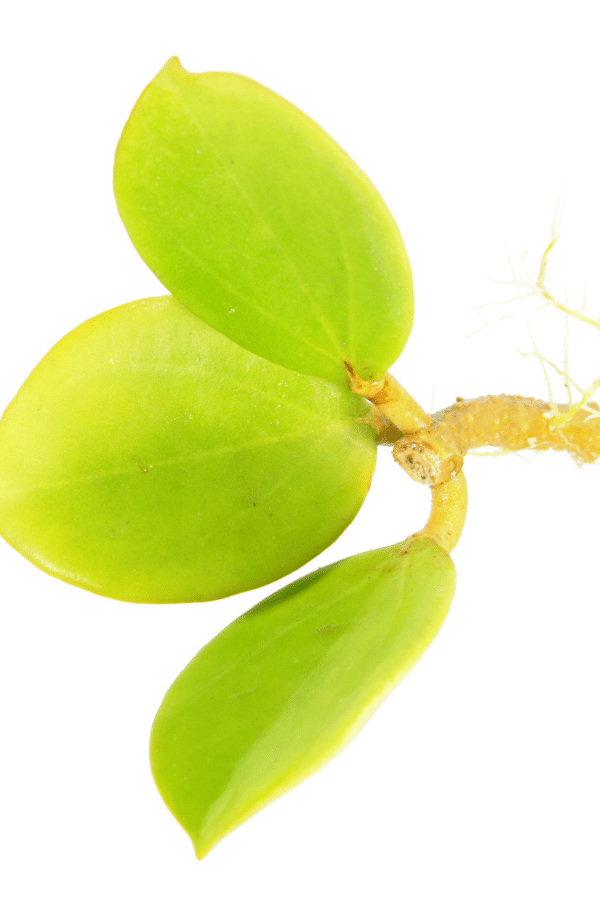Peperomia Rotundifolia
Scientific Name: Peperomia Rotundifolia
Common Name: Trailing Jade, Creeping Buttons, Round Leaf Peperomia
Peperomia Rotundifolia care can be easy as long as you don’t overwater this plant. Growing in its natural habitat in the rainforest, it needs filtered light and little water.
To give this Peperomia plant the best care, it requires well-draining airy soil, let the soil dry out to ensure no overwatering, provide it with indirect sunlight, and temperatures ranging from 65-75F.
Quick Care Overview
| Common Name | Trailing Jade, Creeping Buttons, Round Leaf Peperomia |
| Scientific Name | Peperomia Rotundifolia |
| Family | Piperaceae |
| Origin | South America |
| Growth Rate | Slow |
| Identification | Lengthy stems with many small leaves that trail |
| Height | Up to 12 feet in length |
| Soil | Well-draining airy soil |
| Water | Let soil dry out between waterings |
| Temperature | 65-75F |
| Sunlight | Bright indirect light |
| Toxic to Cats & Dogs | No |
| Toxic to Humans | No |
| Pests | Mealybugs |
| Diseases | Root rot |
Below we will dive deep into this Peperomia Rotundifolia care guide.
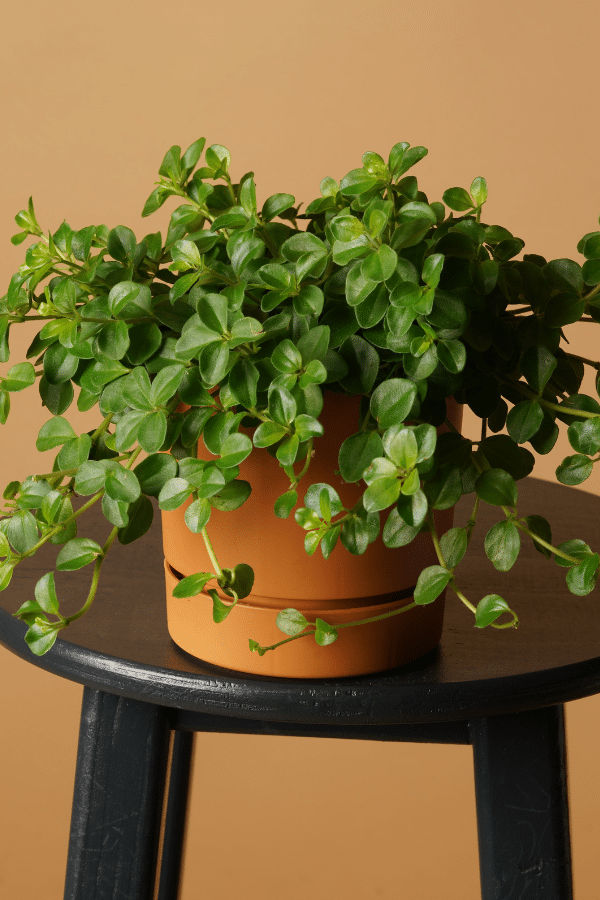
Peperomia Rotundifolia History
South American rainforest native, Peperomia Rotundifolia, otherwise known as the Round Leaf Peperomia, Trailing Jade, Creeping Buttons, or Jade Necklace, is a gorgeous evergreen perennial with small round foliage. Unfortunately, this bushy epiphyte may be hard to find, so you should snatch up your lucky find if you come across one.
Peperomia Rotundifolia Identification
The Round Leaf Peperomia has lengthy stems that produce many small leaves that have a rounded appearance. Foliage is thick and succulent-like. Light green veins may be seen within the darker leaves.
Peperomia Rotundifolia Growth Facts
This Peperomia is well-suited for hanging baskets or in places where they will be allowed to trail.
How Big Does a Peperomia Rotundifolia Get?
This plant remains compact and will likely not exceed 12 feet in length.
Peperomia Rotundifolia Care
Peperomia Rotundifolia care is easy. Just make sure that you provide it with adequate light and that you do not overwater.
Peperomia Rotundifolia Soil
Peperomia Rotundifolia likes a well-draining, airy soil. A mixture of peat to perlite or sand at about a 2:1 ratio should treat this Peperomia quite nicely.
Peperomia Rotundifolia Fertilizer
During the warm growing spring and summer season, your Peperomia will benefit from a twice-monthly feeding from a balanced liquid fertilizer. Ensure that you follow all label instructions and do not overfertilize your plant. Too much fertilizer will cause excess salt to build up in your plant’s soil and cause chemical burn.
Peperomia Rotundifolia Watering
As this plant is an epiphyte with succulent-like leaves, it holds on to moisture via its foliage, and its small roots make it easily prone to overwatering. It is a good idea to let this plant dry out between waterings, and it is better to err on the side of too dry than too wet, as your Peperomia will tolerate some dryness. Water frequency should be reduced in cold months and increased in the warm season.
Peperomia Rotundifolia Light Requirements
Peperomia Rotundifolia is accustomed in its natural environment to receiving dappled sunlight on the forest floor. Therefore, this plant likes partial shade but will do well in bright, indirect light. However, it is essential to note that this plant will not tolerate direct sunlight well, as this will lead to leaf scorching and damage quickly. Therefore, this plant will enjoy being placed near an east or north-facing window.
Peperomia Rotundifolia Temperature & Humidity
Being a tropical plant, Peperomia Rotundifolia likes to remain warm and humid. As such, the ideal temperature for this plant is between 65 to 75 degrees Fahrenheit, although it will tolerate higher temperatures. However, temperatures over 90 degrees Fahrenheit will cause this plant stress. This Peperomia will not tolerate freezing temperatures and should not be kept below 50 degrees Fahrenheit. Additionally, this plant enjoys high humidity and should be kept above 60% humidity or higher when grown indoors. Higher humidity levels will lead to a healthier plant with more vibrant, lush foliage, but this plant will tolerate average home humidity. Ideally, it may be best to install a humidifier, pebble tray, or mist your plant regularly.
Repotting Peperomia Rotundifolia
As this is a very low-maintenance plant, this Peperomia will not need to be repotted frequently. Peperomia Rotundifolia will remain compact and is slow-growing, so it may be years before you need to repot your plant. However, when roots are seen poking through the drainage holes or when the growth of your peperomia has completely halted, you may repot your Peperomia into a container that is 1-2″ larger than the previous container. However, you should refresh the topsoil of your plant annually during the springtime to maintain optimal health.
Peperomia Rotundifolia Maintenance & Pruning
As Peperomia Rotundifolia is a compact, low-maintenance plant, it will not require a lot of pruning. However, you may trim your Peperomia as needed to maintain its shape and remove any discolored or dead leaves.
Peperomia Rotundifolia Propagation
Trailing Jade may be propagated easily from stem cuttings. To take a stem cutting, cut a healthy stem with a few leaves on it using sterilized shears and place the stems into potting soil, water thoroughly, and put them into indirect light.

Peperomia Rotundifolia Toxicity
Peperomia Rotundifolia is considered non-toxic to humans, cats, and dogs.
Toxicity to Humans
Peperomia Rotundifolia is not considered to be toxic and is safe to be around children. However, this plant is not meant to be ingested and should not be consumed.
Toxicity to Cats & Dogs
Luckily, Peperomia Rotundifolia is considered non-toxic to pets. However, this plant should not be ingested as it may induce vomiting.
Peperomia Rotundifolia Problems
Peperomia Rotundifolia Leaves Turning Yellow
When the foliage of the Round Leaf Peperomia turns yellow, it is typically a sign of overwatering.
Peperomia Rotundifolia Leaves Turning Brown
Leaves of this Peperomia may turn brown due to too much direct sunlight or watering issues.
Peperomia Rotundifolia Diseases
Like many other indoor houseplants, Peperomia Rotundifolia may become susceptible to fungal and/or bacterial disease due to overwatering.
Peperomia Rotundifolia Pests
If grown under unfavorable conditions, Peperomia Rotundifolia may become susceptible to mealybugs and other indoor pests. Upon identifying an infestation, isolate your plant, and treat it with a pesticide such as neem oil or insecticidal soap.
FAQ
Is Peperomia Rotundifolia a Succulent?
Peperomia Rotundifolia is not considered a succulent, but it has succulent-like tendencies as this plant is very easy to overwater.
Why Is My Peperomia Rotundifolia Dying?
The number one cause of Peperomia Rotundifolia dying is because of overwatering. Avoiding this is simple by allowing the top portion of the soil to dry out before watering.

